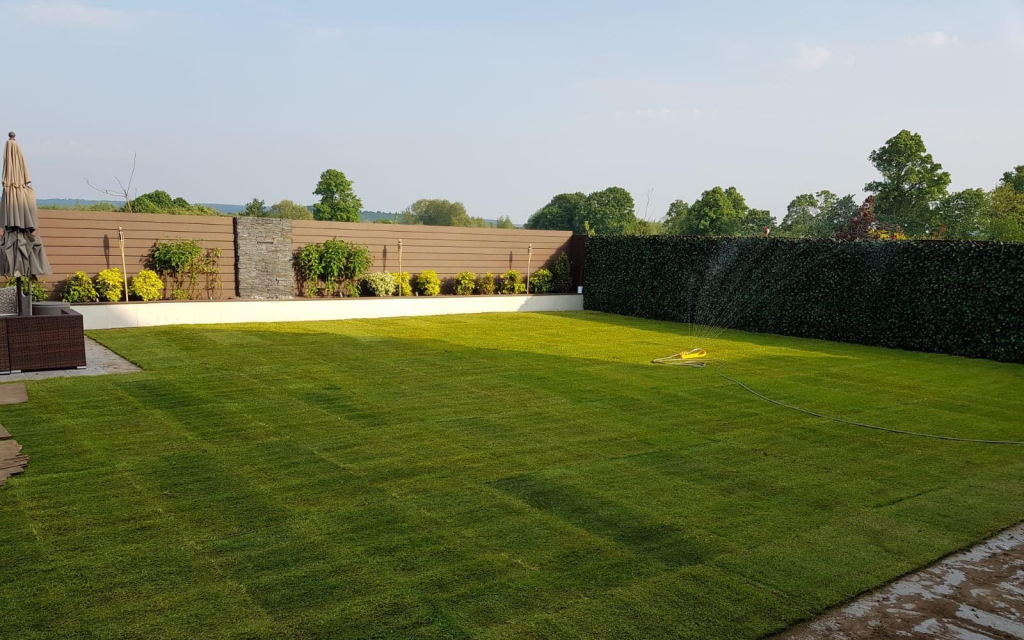
How To Lay Turf

Oxfordshire Turf supplies a budget laying service with selected orders. However, there are occasions when clients opt to do the heavy lifting themselves. Here’s a step by step guide on laying natures carpet.
Before we proceed, it may be worth noting that our team of landscapers offer a lay turf in Oxfordshire. For a relatively modest price, we can supply, prepare and lay your new lawn before your eyes. Whether you live in Oxford, Banbury, Witney, Abingdon, Didcot or beyond, contact us today for your quote.
Prepare The Foundation
If your garden’s a proverbial jungle, you’ll need to apply weed killer before the turf arrives. First ensure you rake the ground, clearing any debris or loose stones in the process. They have the potential to undermine the turf’s appearance and its ability to become established. Depending on your garden, your turf will also benefit from topsoil. Turf (or sod as our American cousin’s say …) and plants require between 2-6 inches of topsoil as a healthy base to grow. Use a rake to evenly distribute topsoil before moving on to the next step.
When The Turf Arrives …
If you’ve measured the garden, allow room for error and order a few extra rolls — A good rule of thumb is 5%. Again, with selected orders we’ll offer you a free estimate. Lay the turf as soon as it arrives. This will ensure your turf becomes established. Use a sprinkler system or hose to keep your lawn hydrated 7 days after it’s set. Failure to heed this step could result in a lawn that suffers from a discoloured and unhealthy appearance.
Laying The Turf
Lay the first rolls of turf along a straight boundary when possible. Use this as a guideline as you begin to roll natures carpet out across your garden. During those early weeks avoid walking on the turf. Once the turf has become established, you’ll be able to mow it for the first time — We’d recommend waiting for at least 10 to 14 days. Applying selected fertilizers to the lawn will improve it’s appearance. We’ll cover this in future posts.

Oxford Turf Supplies have been working through the region for over 2 decades. Contact us or subscribe to our feed if you require further advice on lawn care.
